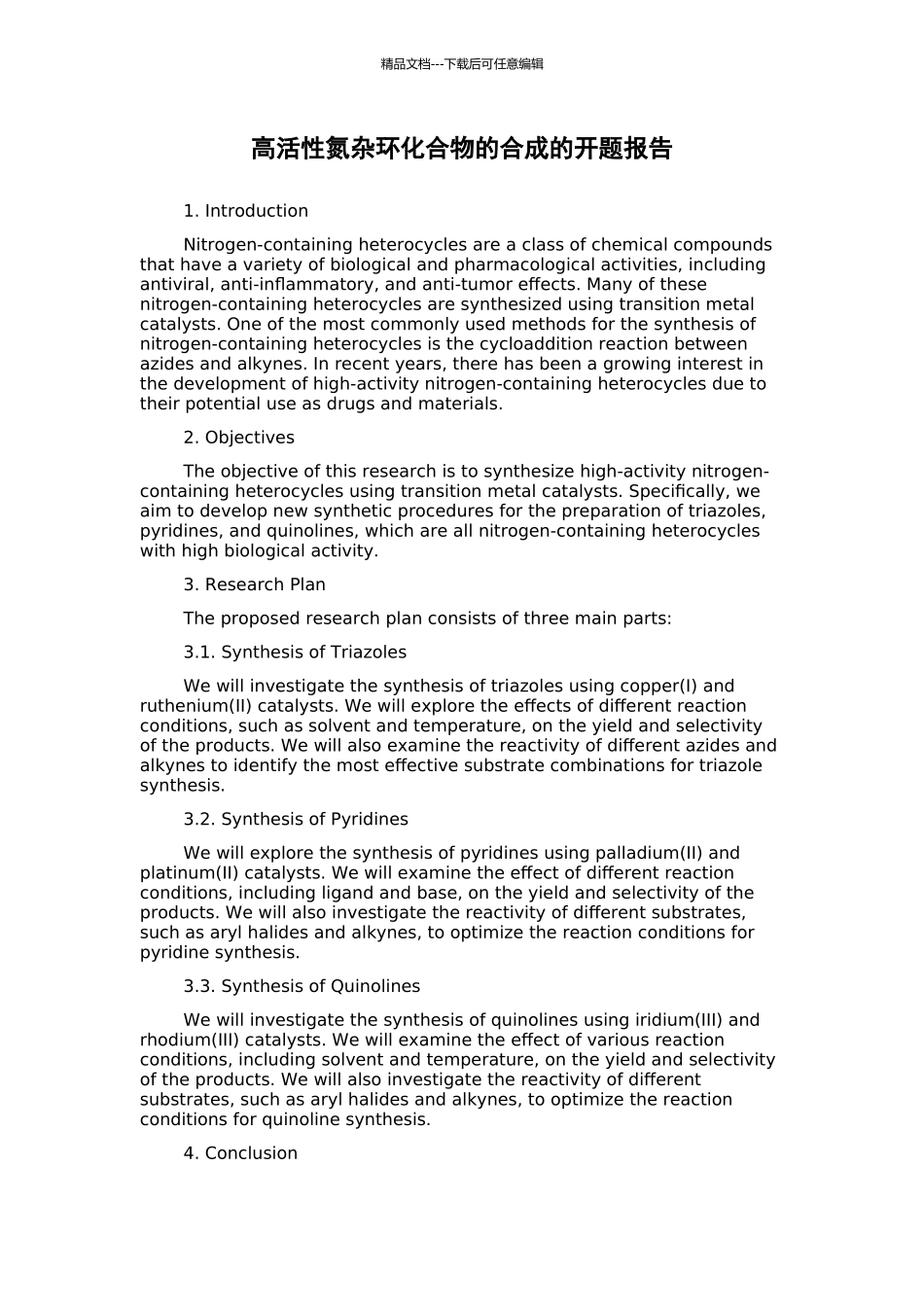精品文档---下载后可任意编辑高活性氮杂环化合物的合成的开题报告1. IntroductionNitrogen-containing heterocycles are a class of chemical compounds that have a variety of biological and pharmacological activities, including antiviral, anti-inflammatory, and anti-tumor effects. Many of these nitrogen-containing heterocycles are synthesized using transition metal catalysts. One of the most commonly used methods for the synthesis of nitrogen-containing heterocycles is the cycloaddition reaction between azides and alkynes. In recent years, there has been a growing interest in the development of high-activity nitrogen-containing heterocycles due to their potential use as drugs and materials.2. ObjectivesThe objective of this research is to synthesize high-activity nitrogen-containing heterocycles using transition metal catalysts. Specifically, we aim to develop new synthetic procedures for the preparation of triazoles, pyridines, and quinolines, which are all nitrogen-containing heterocycles with high biological activity.3. Research PlanThe proposed research plan consists of three main parts:3.1. Synthesis of TriazolesWe will investigate the synthesis of triazoles using copper(I) and ruthenium(II) catalysts. We will explore the effects of different reaction conditions, such as solvent and temperature, on the yield and selectivity of the products. We will also examine the reactivity of different azides and alkynes to identify the most effective substrate combinations for triazole synthesis.3.2. Synthesis of PyridinesWe will explore the synthesis of pyridines using palladium(II) and platinum(II) catalysts. We will examine the effect of different reaction conditions, including ligand and base, on the yield and selectivity of the products. We will also in...

